
The temperature of the rocks in the Earth’s mantle can be as high as 2,7000F. At this temperature, the rocks would usually melt, but they are under such pressure from the rocks above them that they cannot melt completely. However they are able to flow slowly. This is rather like the solid piece of modeling material in the experiment below, which flows slightly when you put enough pressure on it. This kind of flow is called plastic flow. In places, the rocks in the upper part of the mantle do melt completely. This melted rock, called magma, collects in huge pockets called magma chambers. The magma rises because it is hotter and lighter than the semi-liquid rocks. Volcanoes form above magma chambers when the hot magma can rise to the surface. The second project demonstrates this principle using hot and cold water.
You will need: Nonhardening modeling material, wooden board.
1. Make sure that the table is protected by a sheet. Knead the lump of modeling material in your hands until it is soft and flexible. Make it into a ball and place on the table.
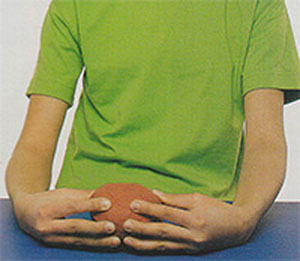
2. Place the board on top, and press it down. The modeling material flattens and squeezes out. It is just like semi liquid rock flowing under pressure. Make it into a ball again.
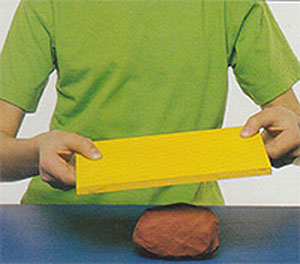
3. Press it with the board. Push the board forward at the same time. The modeling material will flow and allow the board to move forward like the plates in the Earth’s crust.
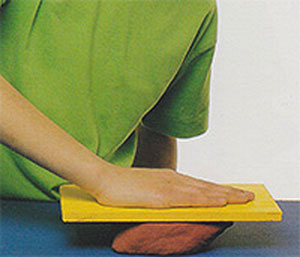
You will need: Dark food coloring, small jar, small pitcher, large pitcher, transparent plastic food wrapping, large jar, oven mitts, strong rubber band, scissors, sharp pencil
1. Pour some of the food coloring into the small jar. You may need to add more later, to give your solution a deep color. This will make the last stage easier to see.
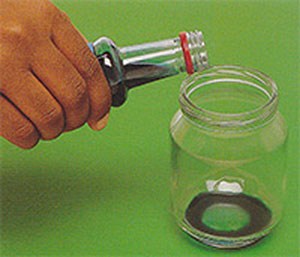
2. Fill the small pitcher with water from the hot tap. Pour it into the small jar. Fill it up to the brim, but don’t let it overflow. Wipe off any water that spills down the sides.
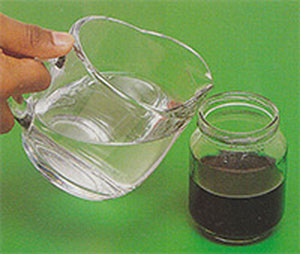
3. Cut a circular piece from the plastic food wrapping an inch or two bigger than the top of the small jar. Place it over the top and secure it with the rubber band.
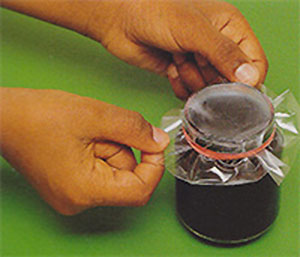
4. With the sharp end of the pencil, carefully make two small holes in the plastic that is covering the top of the jar. If any colored water splashes out, wipe it off.
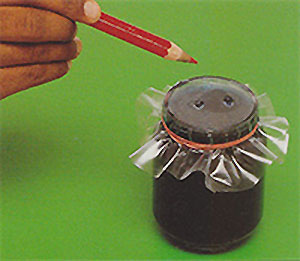
5. Now place the small jar inside the larger one. Use over mitts because it is hot. Fill the large jug with cold water, and pour it into the large jar, not into the small one.
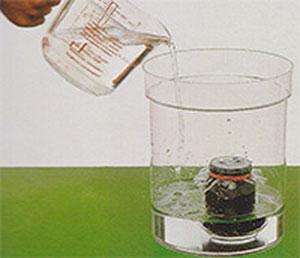
Watch what happens. The colored hot water begins rising from the holes. This happens because the hot water is lighter, or less dense, than the cold water around it. Magma also rises because it is less dense than the semi liquid rock surrounding it.
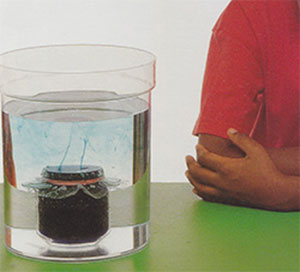
Looking for something? Ask Google.
Try out the other sections